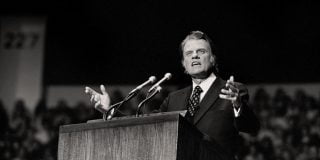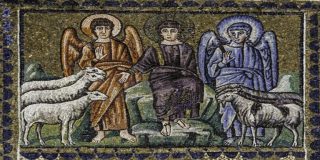Remember the Poor by Bruce Longenecker is a brilliant piece of work that comprehensively dismantles the notion that care for the poor was a marginal concern for Paul and convincingly demonstrates that it was rather a distinctive feature of Christian living in the Gentile Jesus communities.
In the first section of the book Longenecker explores the place of the poor in the Greco-Roman world of the first century CE. Drawing on socio-historical analysis of agrarian societies he establishes that ancient agrarian economies were structured around acquisitiveness by the elite. That is, the vast majority of the population were peasants who existed at subsistence level and were forced to serve the economic interests of a very small but powerful and wealthy elite. The elite controlled the land, which was the overwhelmingly predominant source of wealth, and received the lion’s share of produce.
This should not however lead us into a simplistic divide of society into two groups: rich and poor. Drawing upon and modifying the work of Friesen, Longenecker articulates an economic continuum along which people living in urban settings found themselves:
ES 1-3: Members of the Governing Elites (3% of population)
ES 4: Moderate surplus (15% of population – some merchants, traders, freedpersons, artisans and military veterans)
ES 5: Stable near subsistence level, with reasonable hope of remaining above the minimum to sustain life ( 27% of population – many merchants, traders, regular wage earners, artisans, large shop owners, freedpersons, some farm families)
ES 6: Subsistence level and often below minimum level to sustain life (30% of population – small farm families, labourers, artisans, wage earners, most merchants and traders, small shop/tavern owners)
ES 7: Below subsistence level (25% of population – some farm families, unattached widows, orphans, beggars, disabled, unskilled day labourers, prisoners)
Earlier studies assumed the Greco-Roman economy experienced little growth, being built on the basis of elite acquisition rather than improving productivity. Longenecker draws on more recent studies that show in some areas technological advances were leading to improved productivity and economic growth. Thus he locates a greater proportion of the population in the middling groups ES4 and ES5 than does Friesen.
Whatever we make of the percentages, and they are only estimates that will have varied upwards and downwards from place to place, Longenecker’s scale helps us avoid a binary division of society into rich and poor, at the same time we recognise that the poor, those at ES6 and ES7 levels constituted over 50% of ancient urban communities and a larger proportion still of rural communities.
Having established this Longenecker turns to the response of Greco-Roman communities to the poor. He demonstrates that in Greco-Roman society there was very little concern for people living in poverty. Generosity was valued, but tended to take the form of displays of wealth to advance the status of the giver and was often restricted to those within the giver’s social circles. We should not however imagine, as some scholars do, that there was a complete absence of generosity toward the poor. This may have been minimal but it was not absent.
In contrast to the pagan world, Judaism placed a high value on generosity toward the poor. The biblical prophets were highly critical of the acquisitiveness of the elites at the expense of the poor and almsgiving was seen as a central and crucial expression of covenant righteousness. Thus the Jewish tradition captured both a concern for justice – the poor were poor because of the acquisitive greed of the rich and the social-political-economic systems that enabled acquisition – and for compassion – the righteous will share their wealth with the poor. These twin elements carried over into the ministry of Jesus and the early Christian movement.
With this backdrop established Longenecker turns to the writings of Paul and particularly Galatians 2:10. The context for this passage is tension in the early Christian movement over the status of the Mosaic Law for non-Jewish followers of Jesus. Were non Jewish Christians obligated to follow the Law? A group had come into the Galatian churches claiming that they did, with the commitment to the Law expressed by undergoing circumcision. Paul argues that this runs counter to the gospel he preached, a gospel that was synonymous with that preached by the leaders of the Jerusalem churches. Years earlier they had agreed Paul had been called to proclaim the gospel to “the uncircumcised. All they asked was that we should continue to remember the poor, the very thing I had been eager to do all along.”
The scholarly consensus is that remembering the poor refers not to the poor everywhere, but to the poor in Jerusalem. Some even argue that “the poor” was a technical term for the Judaean Christians. Paul then was not called to care for the poor per se but to ensure the non Jewish church provided support to the church in Jerusalem. This leads scholars to acknowledge the importance for Paul of collecting an offering for the Judaean church (see 2 Corinthians 8-9) but not for the materially poor beyond this.
Longenecker demolishes this consensus by showing that:
- There is no good reason to take “the poor” in Galatians 2:10 to refer to Christians in Jerusalem. This interpretation does not arise until the fourth century. If we take “the poor” to have its more natural meaning of the materially impoverished the Jerusalem leaders are expressing their concern that the Christian community retain its concern for the poor as the gospel message moves out of Jewish circles where this was understood as a core covenantal value into a Greco-Roman context where there was little concern for the poor;
- Concern for the poor is common within the letters of Paul, both in those acknowledged as genuinely Pauline and those ascribed to Paul;
- We should not mistake a low volume of references to the poor with a low priority on caring for the poor. Paul’s letters were situational – he addressed issues of concern in his churches. Assuming the churches were following through on the core value of caring for the poor we should not be surprised that this doesn’t loom large as a discussion pint in Paul’s letters.
I find Longenecker’s argument very convincing. Jesus proclaimed good news to the poor, that God was overturning the systems that oppressed and exploited, that he was renewing covenant relationships and calling into being a new community that lived out this vision. Justice and care for the poor thus lay at the heart of the ministry of Jesus and the early Christian community as described in non-Pauline literature such as Acts and James. It makes sense to see this emphasis continued as the good news was taken outside the Jewish world. Add to this the Greco-Roman disinterest in the poor and Longenecker’s proposed reading of Galatians 2 is compelling. Rather than marginalising poverty, the text reminds us that care for the poor, not circumcision, was identified by the early Christian movement as one of its key distinctives.
There are points where I would question some of Longenecker’s arguments:
- In attempting to demonstrate concern for the poor within the Pauline texts he does at times find reference to the poor where it is absent, and attempts to show texts calling for care for the poor are strategically and climactically placed do appear to me to be forced;
- Attempts to locate on the economic continuum particular people mentioned in the biblical texts, including Paul, are highly speculative (a point Longenecker admits);
- Attempts to explain the appeal of the Christian message in terms of socio-economic dynamics are conducted without significant reference to other motivating features, making them also very speculative and incomplete;
- The book could also have benefited from a study of the dynamics of poverty in developing countries. This would reinforce the stratified nature of poverty – even in villages where everyone may appear to my eyes to be poor, villagers will commonly make distinctions among themselves as to who is really poor. Familiarity with poverty dynamics would also have challenged Longenecker’s assertion that calls to care for the poor were not directed at people in levels ES6 and ES7 as they had no capacity to do so. As Collins, Morduch, Rutherford and Ruthen show in Portfolios of the Poor, borrowing and lending to each other is very common within poor communities.
None of this however detracts from the central thesis, which is a compelling reminder that for Paul, as for the early Christian movement, care for the poor was a distinctive behaviour of gospel shaped communities.







Thanks Scott for a concise summary of Longneckers book. Very helpful. A plain reading of Gal 2;20 makes it clear that the poor are a high priority when we come to faith. Sad that we need a lengthy book that few people in the pews will read to convince us the poor are important?
Hey Scott, the timeliness of this article is amazing, we are studying Galatians at CBC in Growth Groups. Agree with Robin’s comment re: people in the pews still needing that little extra persuasion to convince them of something that is so central in the Biblical Texts. But such is the challenge of the modern day church, we tend to be “studiers” of the Word but not live it out, as though “studying the Bible” checks the box somehow. Thank you for your article. I’m also on WordPress 🙂 Come visit my site 🙂 God Bless
Karen Lee